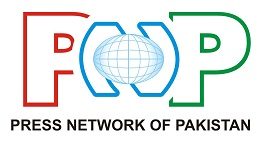Many families also make their daughters doctors for a good relationship, some women cannot find employment, report (Photo: File)
Karachi: Despite the shortage of medical professionals in Pakistan, a large number of women doctors are not employed even though the government is subsidizing billions of rupees for medical education in public sector universities.
Based on their Labor Force 2020-21 research, Gallup Pakistan and PRIDE analyzed data from the Pakistan Bureau of Statistics on the labor market and specifically on female medical graduates and compiled the report. The survey collected data from around 99,900 households across Pakistan and will also provide district-level results for the first time.
According to the results of the survey, on the one hand, there is a severe shortage of qualified doctors in Pakistan, while on the other hand, more than 36,000 female doctors are either unemployed or opting out of the labor force for various reasons.
Bilal Gilani, executive director of Gallup Pakistan, has said that there is a shortage of trained medical doctors in Pakistan and the absence of qualified female doctors is a major problem, costing taxpayers money due to non-performing doctors. is wasted while the health losses are separate.
According to the results of the survey, there are currently 104,974 female medical graduates in Pakistan, of which 68,209 (65 percent) are providing medical services in various private and public institutions, while 15,619 (14.9 percent) female doctors are not working and 20.1 percent of the total number are 21146 percent women doctors are completely out of the labor force.
According to the Pakistan Medical and Dental Council, since its establishment in 1947, Pakistan has produced about 2 lakh doctors, half of whom are women. According to the data of the Bureau of Immigration, about 30 thousand doctors have left Pakistan since 1970 And on an average, about 1,000 doctors are going abroad every year, most of them educated in public universities where the government is spending billions of rupees in subsidizing education.
According to the report, an average private university charges medical students more than Rs 50 lakh in fees while the government provides the same education for less than Rs 10 lakh, thus giving the government a minimum of Rs. A subsidy of more than 40 lakh rupees has to be given, after the heavy subsidy, one out of every 3 female doctors is not working, according to the current value, the investment of at least 200 billion rupees on about 50 thousand female doctors has been lost.
According to Dr. Shahid Naeem, director of policy research at PRIDE, one out of every five medical graduates chooses to stay out of the labor force, and out of the labor force female medical graduates are highly educated. In revising seat allocation policy, exclusion of female medical graduates or doctors from the labor force after completing medical education is a serious problem and needs further research.
The results of the survey show that 72 percent of the total graduates of Pakistan are citizens and 28 percent of doctors are living in rural areas, more than half of the medical graduates are employed in rural areas, 52 percent are unemployed and 31 percent are unemployed while in rural areas 20 17 percent of medical graduates choose to stay out of the labor force, below the national average.
Similarly, according to data from urban centers, about 70 percent of medical graduates are employed, while less than 9 percent are unemployed, while in urban areas, the proportion of medical graduates who choose to stay out of the labor force is over 21 percent.
Comparing urban and rural areas, female medical graduates have 78% employment opportunities in urban areas and only 22% in rural areas. On the contrary, unemployment rate is higher in rural areas with 57 percent while urban unemployment rate is 43 percent.
Out of the 21,146 female medical graduates outside the labor force, urban areas accounted for 76.6% and rural areas accounted for 23.4%. It is noteworthy here that out of the 21,146 female medical graduates outside the labor force, 76 percent are married, compared to a higher ratio of 54 percent among female medical graduates in the age group of 25 to 34 years.
The survey also revealed that many families prefer their daughters to pursue medical education as it makes it easier for them to find a suitable match for marriage.
The survey included women medical graduates who have completed BDS, MBBS, MPhil, MS or MSc or PhD in any field of medicine.
(function(d, s, id){
var js, fjs = d.getElementsByTagName(s)[0];
if (d.getElementById(id)) {return;}
js = d.createElement(s); js.id = id;
js.src = “//connect.facebook.net/en_US/sdk.js#xfbml=1&version=v2.3&appId=770767426360150”;
fjs.parentNode.insertBefore(js, fjs);
}(document, ‘script’, ‘facebook-jssdk’));
(function(d, s, id) {
var js, fjs = d.getElementsByTagName(s)[0];
if (d.getElementById(id)) return;
js = d.createElement(s); js.id = id;
js.src = “//connect.facebook.net/en_GB/sdk.js#xfbml=1&version=v2.7”;
fjs.parentNode.insertBefore(js, fjs);
}(document, ‘script’, ‘facebook-jssdk’));


